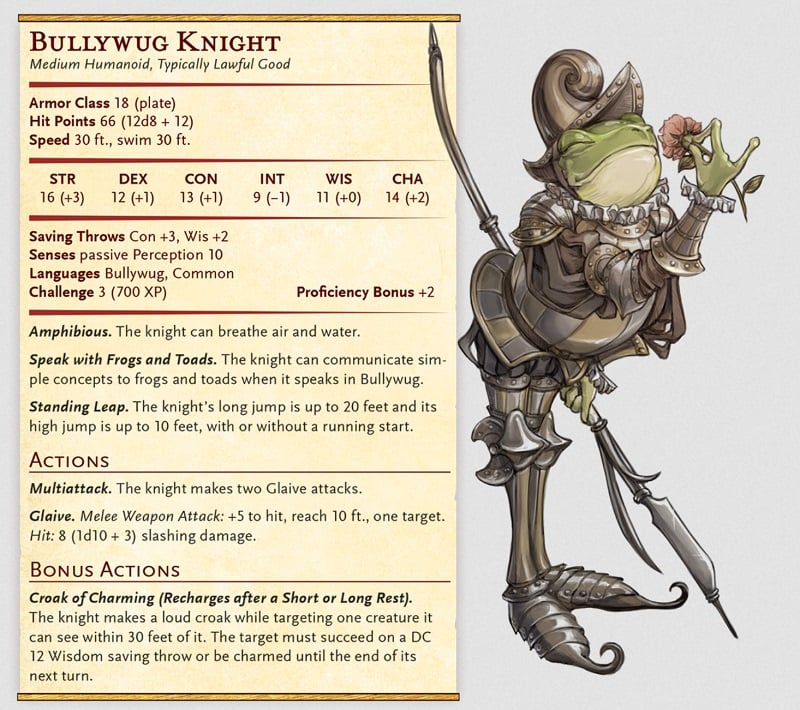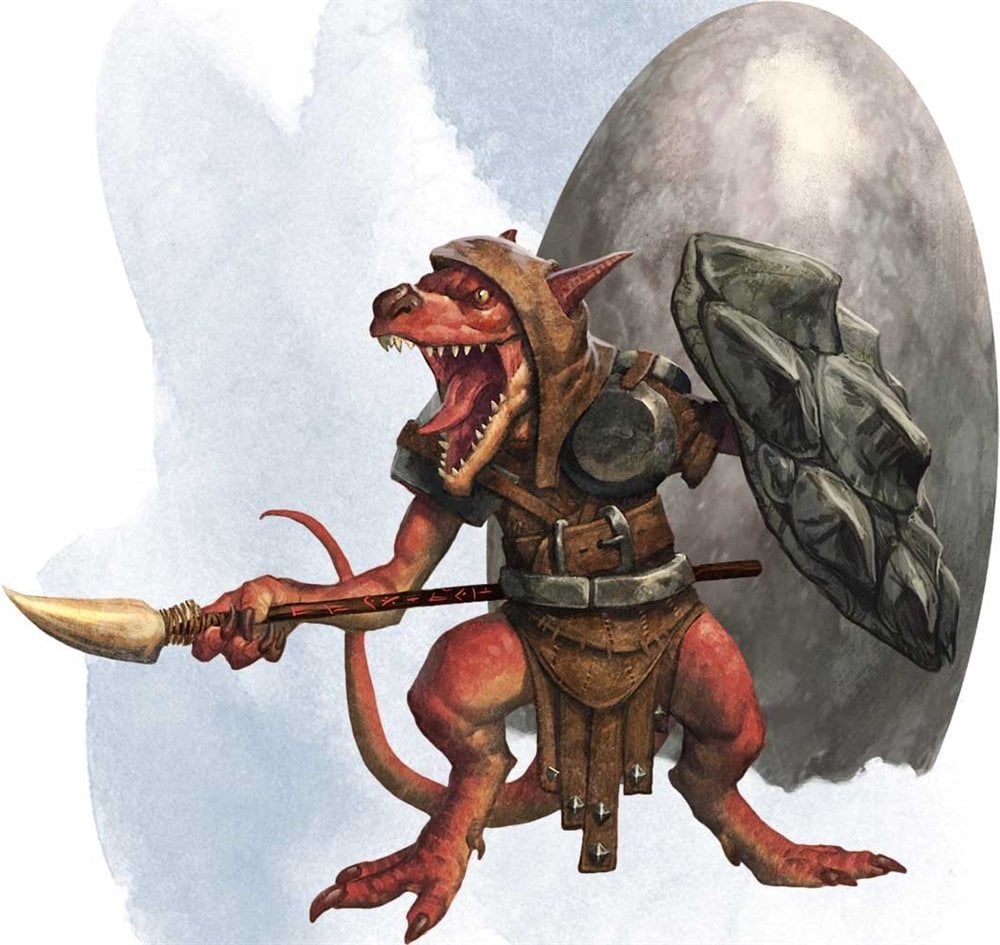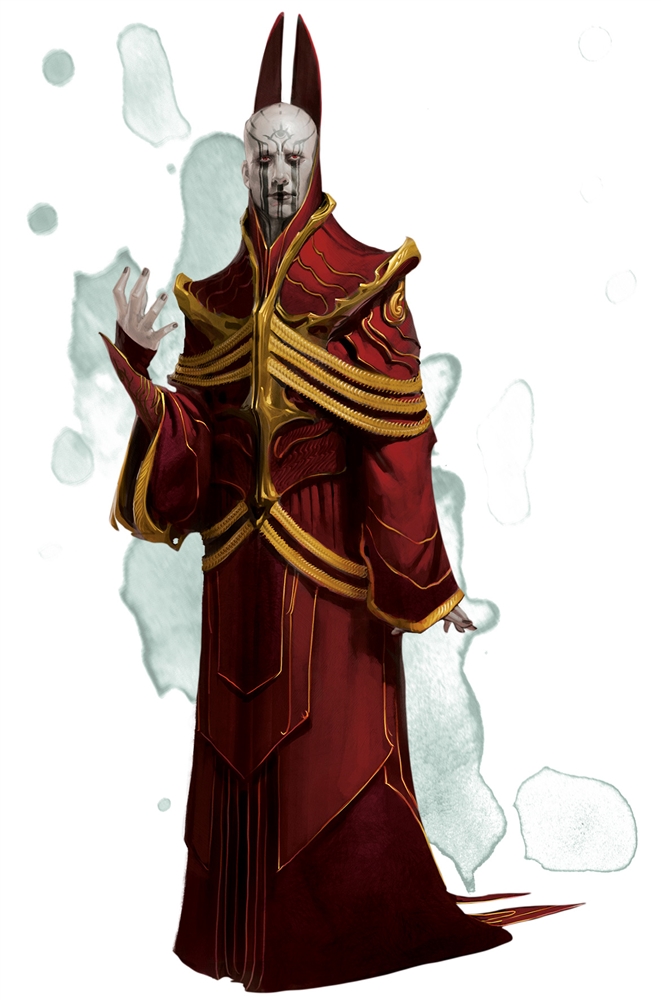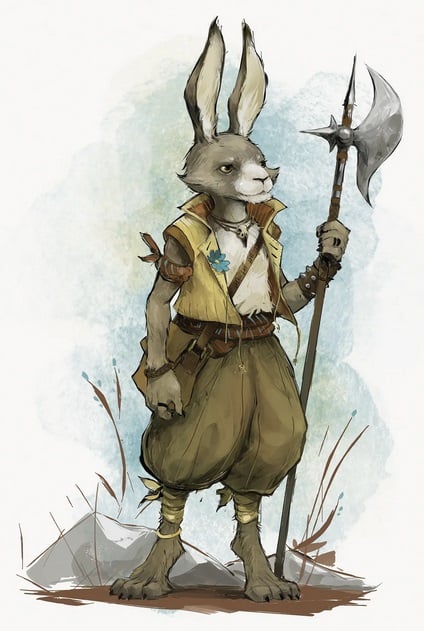Sage Advice is back after a long hiatus, as WotC unveils “the future of monster stat blocks” as well as rules changes for Player Races.
It’s the start of a new month and changes are ahoy with the return of Sage Advice. Not long after the “Future of D&D” revealed that a “New Evolution” of the game is coming in 2024, WotC dropped a bunch of new previews that will take effect from now going forward. You can expect to see some substantive changes to monster stat blocks, including the new “spellcasting” rules that will be in full effect in the upcoming rules expansion book, Mordenkainen Presents: Monsters of the Multiverse.
Let’s look at changes to monsters:
Alignment & Creature Type
First up, humanoid is being reserved for “creatures who are humanlike in their moral and cultural range,” which means that in the future fewer creatures will be humanoids–looking through Monsters of the Multiverse (and presumably the new core books in 2024) we’ll see older creature types that were once humanoids now are Monstrosities, Fey, or other types.
Alongside that, Crawford explains the changes to Alignment, including its absence from recent adventures, and its reappearance in Wild Beyond the Witchlight:
For a while, there’d been some confusion in the community about alignment’s role in D&D. In the rules of the Player’s Handbook, you choose your character’s alignment, and in the rules of the Monster Manual, the DM determines a monster’s alignment. No matter what alignment is chosen, a creature’s alignment describes that creature’s moral outlook; alignment doesn’t determine the creature’s behavior. Alignment is essentially a roleplaying aid.
To reinforce alignment’s function as a roleplaying tool, WotC will be making changes to how they portray alignment in monster stat blocks:
- Only named individuals, such as Mister Witch and Mister Light, have a definite alignment.
- Generic Humanoids bear the words “Any Alignment,” reminding the DM that such people have vast moral range.
- Magical creatures that have a strong moral inclination (angels, demons, devils, undead, and the like) have an alignment preceded by the word “Typically.” For example, a demon’s stat block says “Typically Chaotic Evil,” since it is typical for a D&D demon to be chaotic evil. That one word—“typically”—reminds the DM that the alignment is a narrative suggestion; it isn’t an existential absolute. The holy can fall, and the fiendish can rise. Members of certain organizations—charitable knighthoods or diabolical cults, for example—also sometimes get the “Typically” treatment.
- Creatures, such as most Beasts and Oozes, that are incapable of moral discernment continue to lack an alignment and therefore bear the term “Unaligned.”
Essentially humanoids without some strong magical pull towards good or evil will no longer be given a default alignment. So orcs, goblins, elves, gnomes and the like will no longer be default good or evil, but angels and demons will typically be good or evil–along with members of organizations, like the Bullywug Knight up there, who represents the typical bullywug knight, aspiring to be a lawful and good bastion of chivalry.
Speaking of elves, goblins, and so on, the Monsters of the Multiverse book will introduce a new system of tags that will “create fresh ways for creatures to interact with the game’s system” like new tags that make creatures count as members of a class so they can attune to certain magic items.
Which segues nicely into the new Spellcasting Rules. Now monsters that can cast spells and NPC spellcasters all now have the “Spellcasting Action” which carries the following with it:
- The Spellcasting action doesn’t use spell slots. A creature can cast the action’s spells a certain number of times per day.
- The only spells that appear in the Spellcasting action are ones that take an action to cast. If a spell requires a bonus action, a reaction, or a minute or more to cast, that spell must appear elsewhere in the stat block. This change ensures that bonus actions and reactions—such as misty step and shield—aren’t hiding out in a list of spells.
- We’re more selective about which spells appear in a stat block, focusing on spells that have noncombat utility. A magic-using monster’s most potent firepower is now usually represented by a special magical action, rather than relying on spells.
No more questions as to what class the Archmage is, they’ll presumably have a tag. But it does raise some questions, since, for the most part, spells like fireball will be replaced with magical attack actions. This leaves many wondering whether Counterspell will still work to prevent these attacks. Likely as not counterspell will be clarified in a forthcoming Sage Advice, so keep an eye out.
Now on to the changes to character races. Starting with the Harengon and Fairies, and going forward going forward all new player races will have the following changes:
- New character races lack an Age trait, replaced with: “The typical life span of a player character in the D&D multiverse is about a century, assuming the character doesn’t meet a violent end on an adventure. Members of some races, such as dwarves and elves, can live for centuries.”
- There will be no suggested alignment traits either
- The size trait will become more flexible–harengon, for instance, can choose to be medium or small, others will have the following new text: “Player characters, regardless of race, typically fall into the same ranges of height and weight that humans have in our world. If you’d like to determine your character’s height or weight randomly, consult the Random Height and Weight table in the Player’s Handbook, and choose the row in the table that best represents the build you imagine for your character.”
- Finally: new races will lack traits that are purely cultural, so no more Languages included going forward.
It’s interesting to see how this plays out–technically this means you can choose to be a very tall gnome or dwarf, but again it’s mostly just down to what feels right. Instead of saying “my character is 5’2″ which makes them an extremely lanky dwarf,” you can just say “my character is tall for a dwarf, most people mistake them for human.”
This is just the continuation of the evolving rules of 5th Edition. I wouldn’t be surprised if we see more of this in the future to prepare the waters for coming changes. It puts me in mind of the living rules of games like Age of Sigmar.
What do you think of the rules changes? Let us know in the comments
Source: Bell of Lost Souls








